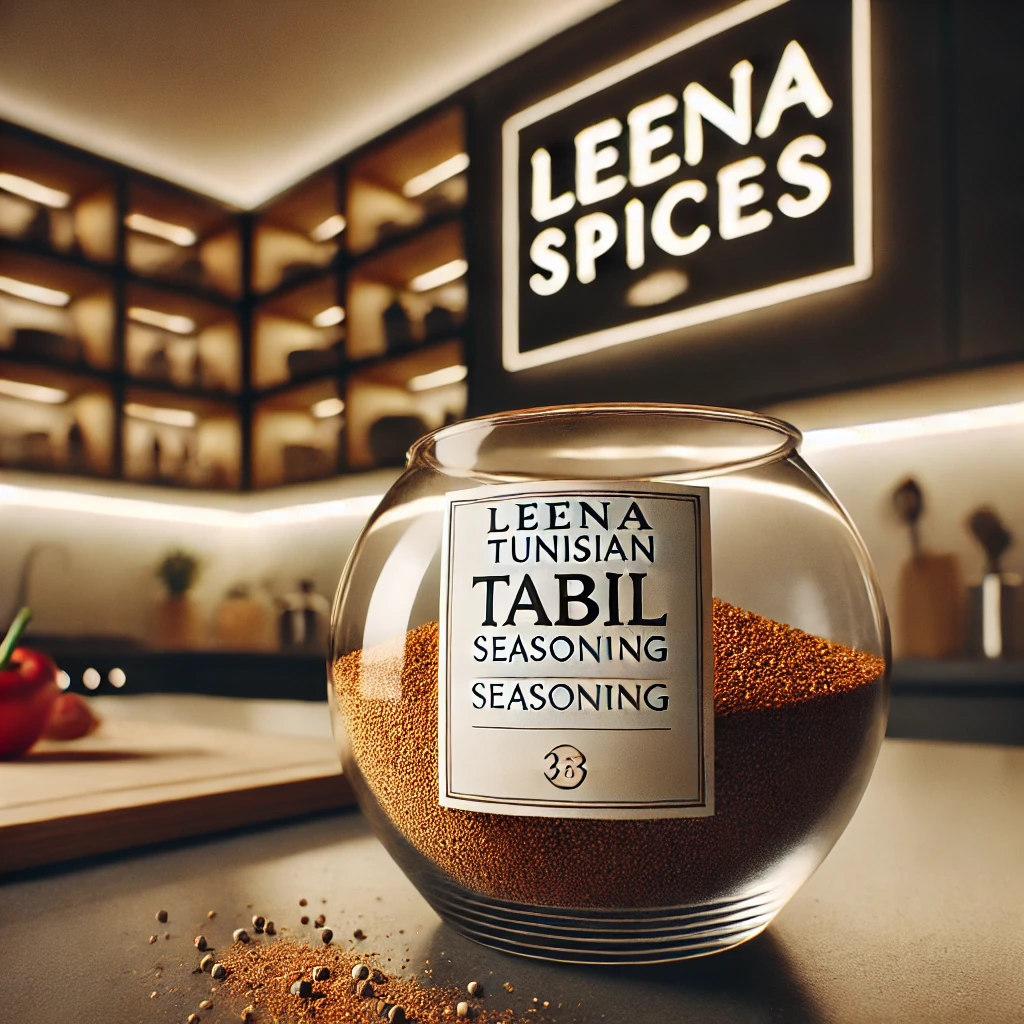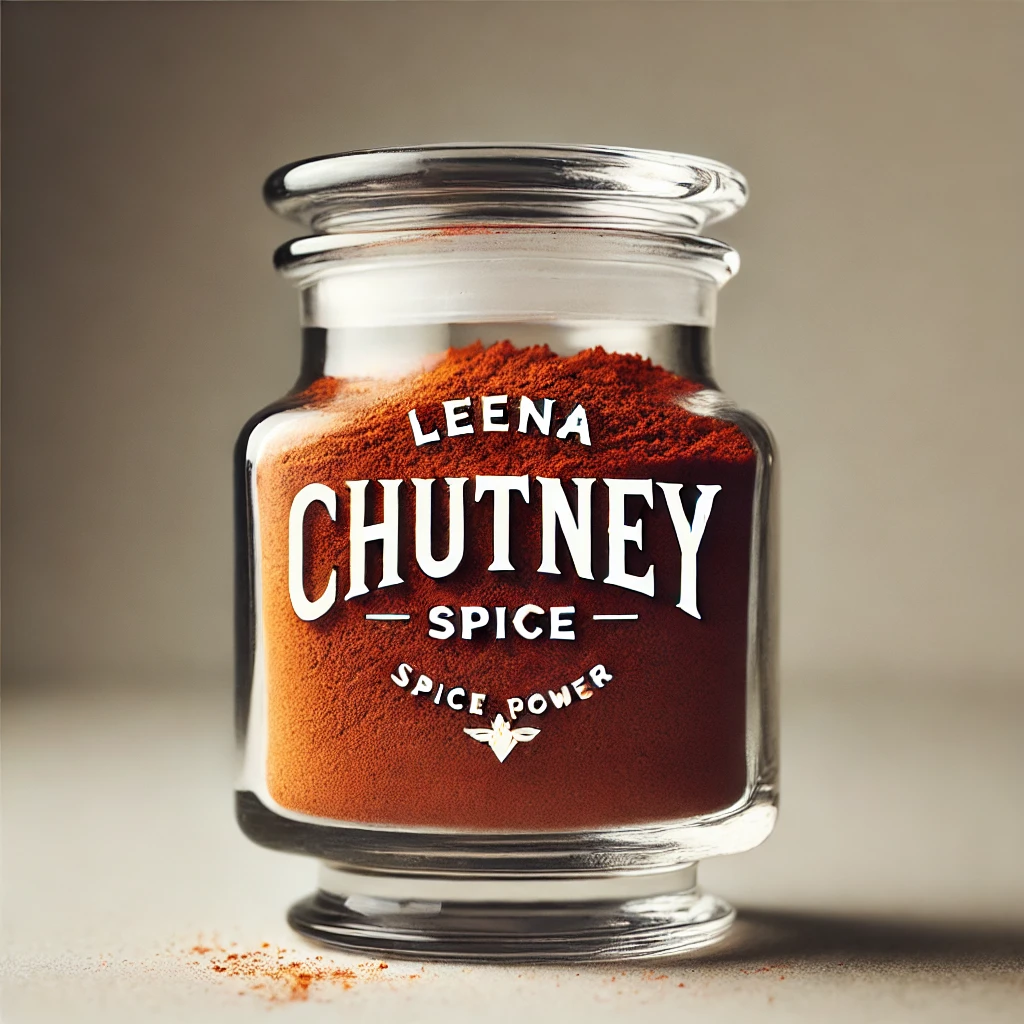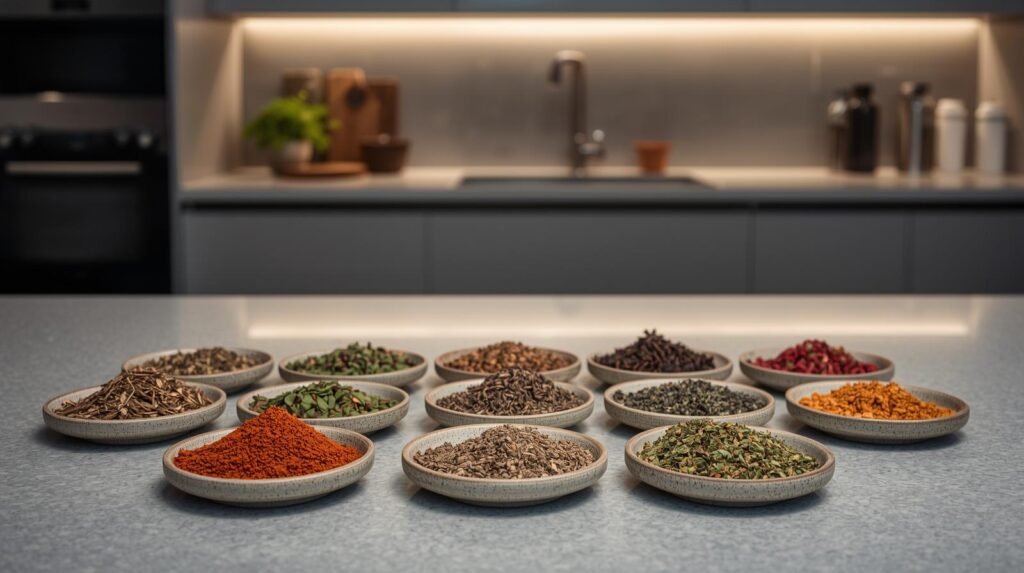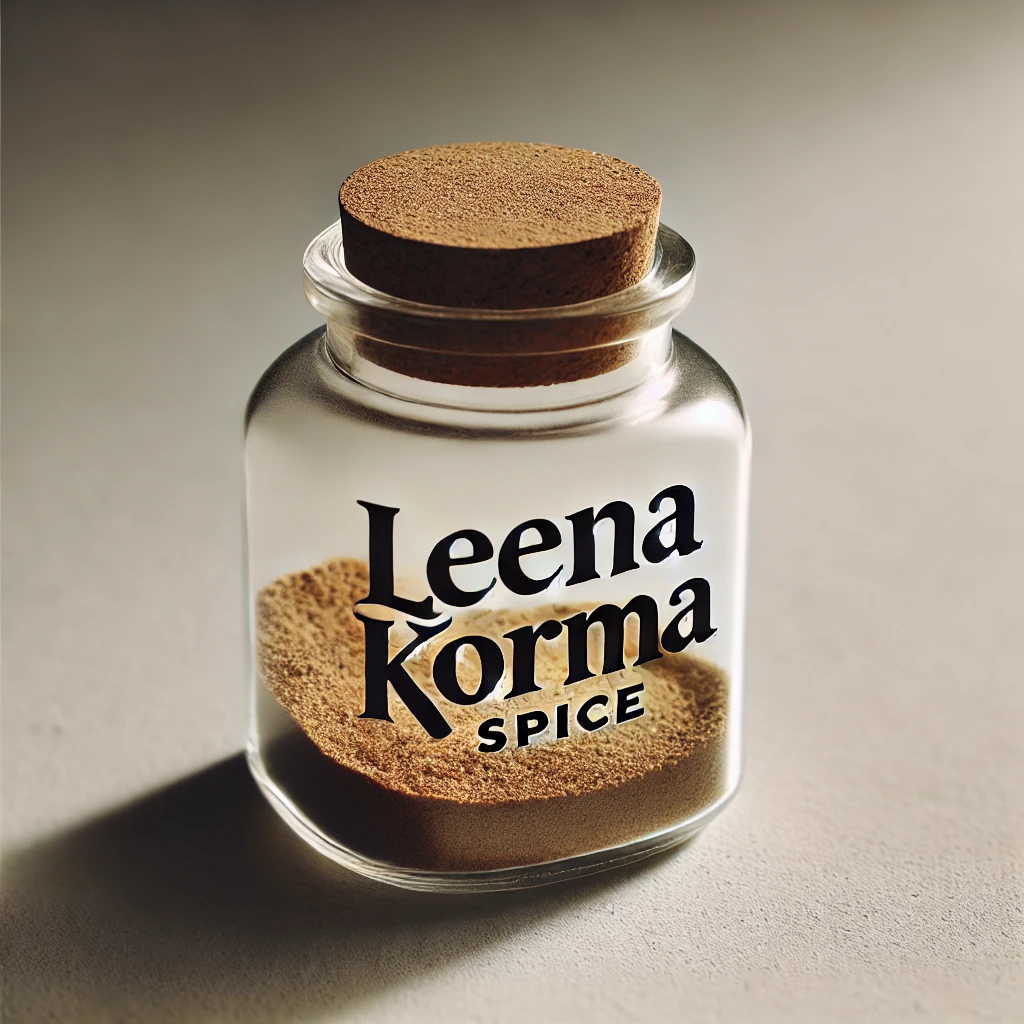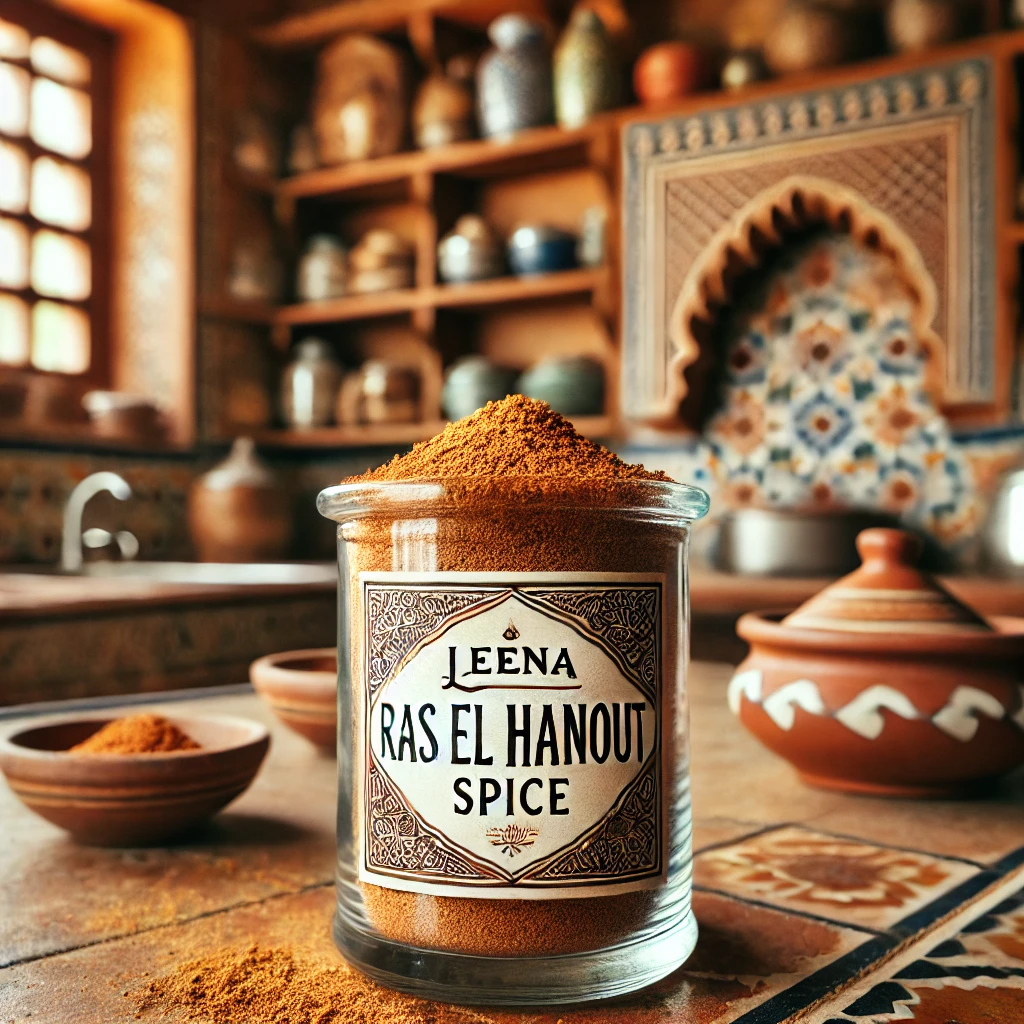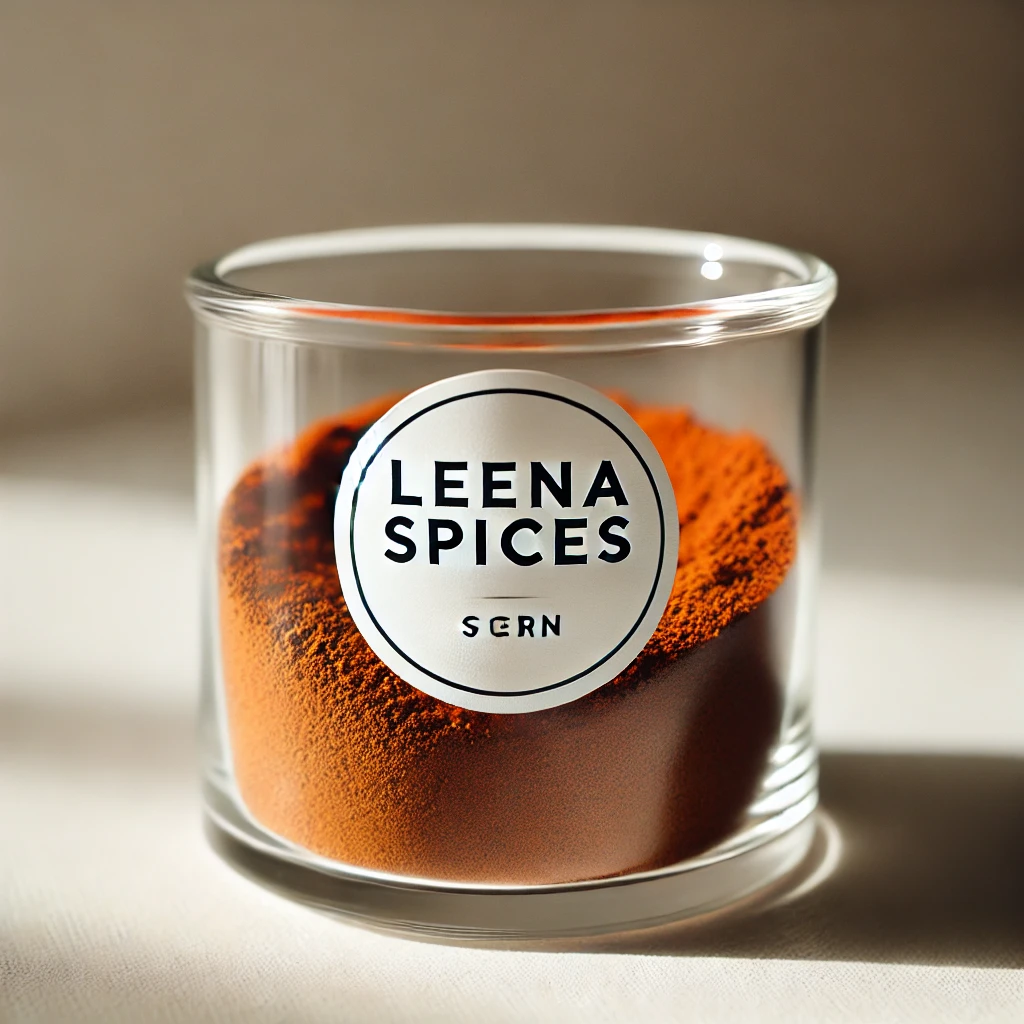Discover 9 Irresistible Ways Togarashi Can Transform Your Japanese Dishes
Table of Contents
- Key takeaways
- What is Shichimi Togarashi
- Is Togarashi spicy
- Shichimi Togarashi vs Nanami Togarashi
- What are the seven ingredients in Shichimi Togarashi
- What does it taste like
- Can I make it at home
- Health benefits
- How do I use Togarashi
- How did Togarashi become a common Condiment
- FAQs
- Conclusion
Key Takeaways: Togarashi Spice Blend
What is Shichimi Togarashi?
Togarashi is a traditional Japanese spice blend, most commonly known as Shichimi Togarashi, meaning “seven-flavor chili pepper.” It combines chili, citrus peel, sesame seeds, nori, ginger, and other aromatic ingredients.
Is Togarashi spicy?
Yes, it’s moderately spicy. The chili provides heat, balanced by citrus, sesame, and seaweed, creating a layered, well-rounded flavor rather than overwhelming spiciness.
How is Togarashi used in Japanese cuisine?
A: It’s primarily a finishing spice, sprinkled over noodles, rice, grilled meats, tempura, and soups to enhance flavor, aroma, and umami.
What’s the difference between Shichimi and Nanami Togarashi?
Both are seven-spice blends. “Nanami” is simply an alternate pronunciation of “Shichimi,” sometimes emphasizing citrus, but the ingredients are largely the same.
What Are the Seven Ingredients in Shichimi Togarashi?
While recipes can vary slightly by region or brand, the classic blend usually includes the Red Chili Pepper, Sansho Pepper, Roasted Citrus Peel (Orange or Yuzu), Black Sesame Seeds , White Sesame Seeds, Nori or Aonori (Dried Seaweed) and Ground Ginger.
Can I make Togarashi at home?
Absolutely! You can create a preservative-free homemade spice blend using dried red chili, sesame, citrus peel, nori, ginger, and sansho pepper.
Can Togarashi be used outside Japanese cuisine?
Yes! Sprinkle it on popcorn, roasted vegetables, avocado toast, eggs, or even in dips and dressings for a spicy, umami twist.
Why is Togarashi popular in noodle restaurants?
Its balanced heat, flavor versatility, and shelf-stability make it perfect for diners to customize noodle dishes like ramen, udon, and soba.
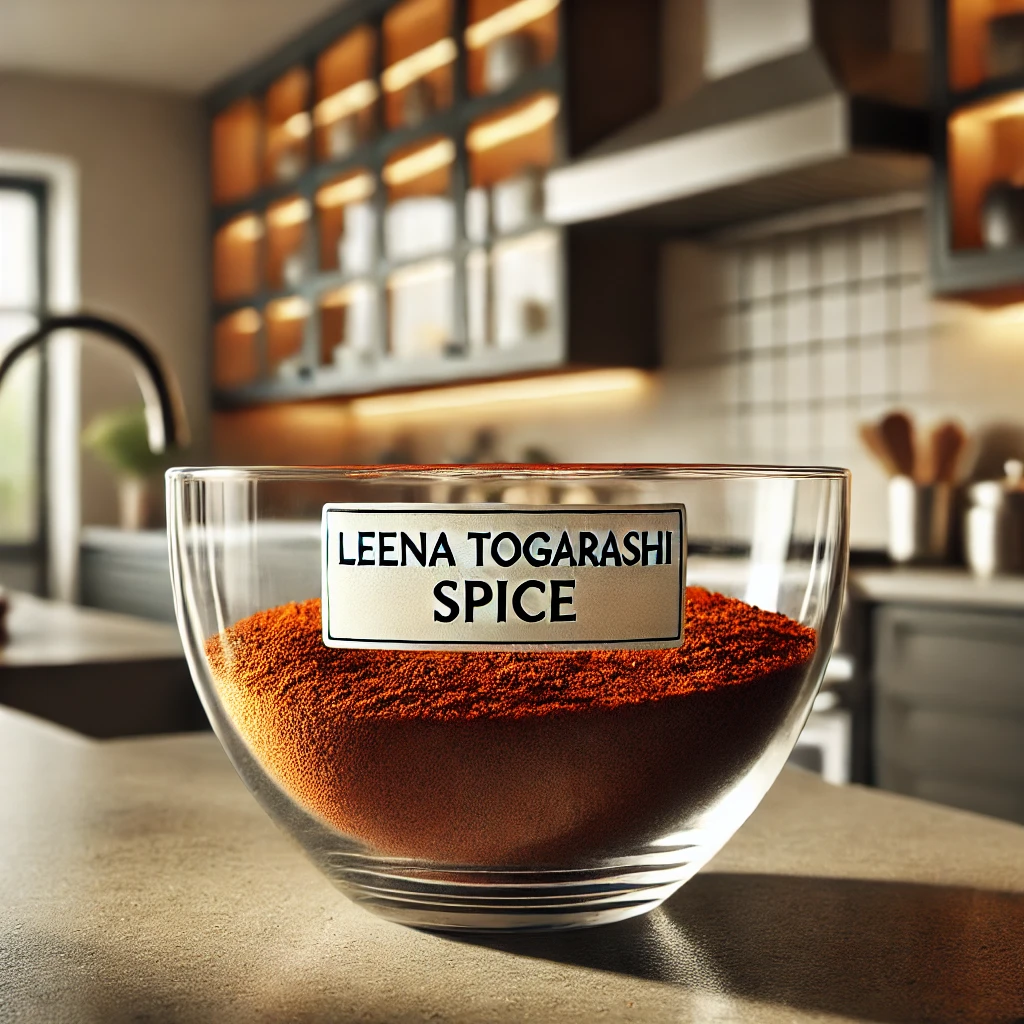
What Is Shichimi Togarashi?
Shichimi Togarashi, often called Japanese seven-spice blend, is a traditional seasoning that has been used in Japan for centuries. The name translates to “seven-flavor chili pepper,” reflecting its signature mix of seven carefully chosen ingredients that work together to create a flavor that is spicy, citrusy, nutty, and deeply aromatic.
Unlike single-note spices, Shichimi Togarashi is prized for its balance and complexity. The blend typically includes ground red chili pepper, sesame seeds, dried orange peel, nori (seaweed), and ginger, along with two additional spices that vary by region or maker. The result is a seasoning that adds heat, brightness, and umami without overwhelming a dish.
Historically, Shichimi Togarashi originated in 17th-century Tokyo (then called Edo). It was first sold by herbalists, not chefs, who valued it for its medicinal benefits, particularly for aiding digestion and improving circulation. Over time, it shifted from the apothecary to the kitchen, becoming a popular table condiment.
Today, Shichimi Togarashi is as common in Japan as salt and pepper are in the West. You’ll find it on the tables of ramen shops, udon houses, and izakayas, ready to sprinkle over noodles, rice bowls, grilled meats, tempura, and even modern snacks like popcorn or French fries. Its vivid red-orange color, fragrant aroma, and subtle kick of heat make it a versatile finishing spice that instantly elevates both traditional and contemporary dishes.
Is Togarashi Spicy, and How Does It Fit into Japanese Cuisine?
Spice Level
- Shichimi Togarashi: Moderately spicy (≈15,000–30,000 SHU), with heat from red chili peppers balanced by sesame seeds, citrus peel, nori, ginger, and sansho. The result is a layered, gentle warmth rather than overwhelming heat.
- Ichimi Togarashi: Spicier, as it’s pure ground chili. Provides sharp, direct heat without the balancing ingredients of Shichimi.
- Overall Experience: Togarashi delivers a noticeable but not extreme kick, suitable for most palates. Use sparingly if sensitive (1/8 tsp per serving).
Role in Japanese Cuisine
Togarashi is more than just a chili spice—it’s a finishing seasoning that enhances flavor, aroma, and visual appeal without masking natural tastes.
5 Key Ways Togarashi Enhances Japanese Dishes:
- Noodle Dishes (Ramen, Udon, Soba)
- Adds spicy, citrusy, and umami layers to broths or dry noodles.
- Tip: Mix with dried nori for a preservative-free noodle seasoning.
- Yakitori & Grilled Foods
- Provides heat, nuttiness, and aromatic complexity to grilled chicken, pork, or fish.
- Tip: Blend with dried red capsicum flakes for a natural grilling rub.
- Miso Soup & Hot Pots
- A pinch warms and balances umami-rich soups, enhancing depth without overpowering.
- Tip: Pair with homemade dried ginger for a preservative-free boost.
- Rice Dishes & Onigiri
- Sprinkled on rice bowls or rice balls for a subtle spicy-umami kick.
- Tip: Make a furikake-style mix with Togarashi and dried seaweed for a natural seasoning.
- Tempura Dipping Sauce
- Infuses soy-based dips with citrusy heat, cutting through the richness of fried foods.
- Tip: Combine with homemade garlic powder for a preservative-free dip.
Key Takeaways
- Togarashi is moderately spicy, offering balanced, layered heat.
- Its unique blend of seven ingredients adds aroma, crunch, and citrusy brightness.
- Used primarily as a finishing seasoning, it complements rather than overpowers dishes.
- Perfect for homemade, preservative-free spice blends, aligning with natural cooking preferences.
Shichimi Togarashi vs. Nanami Togarashi: What’s the Difference?
The Name
Shichimi Togarashi (七味唐辛子): Translates to “seven-flavor chili pepper.” This is the standard and most common name in Japan.
Nanami Togarashi (七味唐辛子): Uses an alternate pronunciation of the number seven (“nana” instead of “shichi”). Some brands—most notably S&B—use “Nanami” in international markets to avoid confusion with Ichimi Togarashi (“one-flavor chili,” which is just ground red chili pepper).
Bottom line: The name difference is more about pronunciation and branding than about substance.
Ingredients
Both blends contain the same seven core ingredients (with small variations depending on the maker):
Red chili pepper
Sansho (Japanese pepper)
Roasted orange or tangerine peel
Black sesame seeds
White sesame seeds
Ground ginger
Nori (seaweed) or poppy/hemp seeds
Subtle Differences
Shichimi Togarashi: Generally offers a balanced mix of heat, citrus, nuttiness, and umami.
Nanami Togarashi: Some versions emphasize more citrus peel (orange, yuzu, or tangerine), giving a slightly brighter, sweeter, citrus-forward flavor. Others may reduce or omit hemp seeds due to export restrictions.
Flavor Profile
Shichimi Togarashi: Balanced heat, gentle citrus notes, earthy sesame, and savory umami.
Nanami Togarashi: Similar overall taste, but often described as a little brighter and more citrusy, sometimes with milder heat depending on the brand.
In practice, the difference is subtle—many people wouldn’t notice unless tasting side by side.
Uses in Cooking
Both are used interchangeably as finishing spices, much like salt and pepper in the West. Sprinkle them on:
Noodles (ramen, soba, udon)
Rice and onigiri (rice balls)
Miso soup and hot pots
Grilled meats, seafood, and yakitori
Tempura, fried foods, and snacks
If you prefer a spicier, balanced kick, Shichimi is perfect. If you like a citrus-forward touch, Nanami may be your pick.
Key Takeaway
Shichimi Togarashi and Nanami Togarashi are essentially the same seven-spice blend. “Nanami” is simply a different pronunciation of “seven” and is often used for branding outside Japan. While Shichimi tends to be more balanced, Nanami sometimes leans brighter with a touch more citrus. Whichever label you see, you’re getting a versatile, aromatic seasoning that adds heat, depth, and complexity to both traditional Japanese dishes and modern fusion recipes.
At a Glance: Shichimi Togarashi vs. Nanami Togarashi
Aspect | Shichimi Togarashi | Nanami Togarashi |
Meaning of Name | “Seven-flavor chili pepper” | Alternate pronunciation: “Seven-flavor chili pepper” |
Common Ingredients | Red chili, sansho, orange/tangerine peel, black & white sesame, nori, ginger, poppy/hemp seeds | Same seven core ingredients; some blends have slightly more citrus peel or omit hemp seeds |
Flavor Profile | Balanced heat, mild citrus, nutty, umami | Slightly brighter citrus flavor, often milder heat, subtle sweetness |
Typical Uses | Noodles, rice, soups, grilled meats, tempura | Same as Shichimi; preferred when a citrus-forward taste is desired |
Branding Notes | Standard and most common in Japan | Often used by specific brands (e.g., S&B) in international markets |
Quick Tip: Use either as a finishing spice to preserve aroma, crunch, and vibrant flavor. If you want a touch of extra citrus, pick Nanami; if you prefer balanced heat, go for Shichimi.
What Are the Seven Ingredients in Shichimi Togarashi?
Shichimi Togarashi, or “seven-flavor chili pepper,” earns its name from the seven ingredients that create its distinct balance of heat, aroma, and umami. While recipes can vary slightly by region or brand, the classic blend usually includes the following:
- Red Chili Pepper – The star of the mix, providing the spicy kick that defines the seasoning.
- Sansho Pepper – A unique Japanese pepper with a citrusy flavor and a subtle numbing effect, similar to Sichuan peppercorns.
- Roasted Citrus Peel (Orange or Yuzu) – Adds brightness, fragrance, and a touch of sweetness to balance the spice.
- Black Sesame Seeds – Contributes nuttiness and a rich, toasty flavor.
- White Sesame Seeds – Adds a lighter, slightly sweeter nutty note and a crunchy texture.
- Nori or Aonori (Dried Seaweed) – Brings umami depth and a delicate oceanic flavor.
- Ground Ginger – Provides warmth, spice, and a gentle aromatic lift.
In some versions, hemp seeds or poppy seeds are added for extra crunch, or garlic and shiso may be used for a different twist. But the goal is always the same: to create a seasoning that is more than just spicy. The combination layers heat, nuttiness, citrus, and umami in perfect balance, making Shichimi Togarashi a versatile finishing spice for noodles, soups, rice, grilled foods, and even modern snacks like fries or popcorn.
What Does Togarashi Taste Like?
Key Flavor Notes in Togarashi
- Spicy Heat: Red chili peppers bring a sharp, direct kick. The heat builds quickly but fades smoothly, typically moderate (15,000–30,000 SHU), enough to awaken the palate without overwhelming it.
- Citrusy Brightness: Roasted orange or yuzu peel and sansho pepper add zesty, tangy notes that cut through richness and add freshness.
- Nutty Crunch: Sesame seeds (and sometimes hemp or poppy seeds) give a toasty, slightly sweet nuttiness and a pleasant crunch.
- Umami Depth: Nori or seaweed infuses a subtle briny, savory undertone that rounds out the blend.
- Aromatic Warmth: Ginger contributes gentle warmth and spice, while sansho adds a mild numbing, citrusy sensation similar to Sichuan peppercorns, but softer.
- Balanced Layering: The interplay of heat, citrus, nuttiness, umami, and spice creates a harmonious seasoning designed to enhance rather than overpower
Overall Flavor Experience
When sprinkled over food, Togarashi delivers a quick burst of chili heat, followed by bright citrus zest, nutty crunch, and a lingering warm, savory finish. Its complexity makes it adaptable, adding vibrancy to soups, noodles, rice bowls, grilled meats, or even snacks like popcorn.Ichimi vs. Shichimi
- Ichimi Togarashi: Pure ground chili pepper—straightforward, sharp, and hot.
- Shichimi Togarashi: The full seven-spice blend—layered, zesty, nutty, and umami-rich.
Comparison to Other Spices
Togarashi is often compared to chili flakes or cayenne pepper, but it’s more nuanced due to its citrus, seaweed, and sesame elements. Unlike cinnamon’s warm sweetness, Togarashi offers a spicy, savory brightness that brings balance to both traditional Japanese and modern fusion dishes.Can I Make Shichimi Togarashi at Home?
One of the best things about Shichimi Togarashi is that it is easy to make at home. Crafting your own version means you control the freshness, balance of flavors, and heat level without relying on preservatives found in many store-bought blends.
Ingredients (for about ½ cup)
- 2 tablespoons dried red chili flakes (Japanese chilies or cayenne)
- 1 tablespoon sansho pepper (or Sichuan peppercorns as a substitute)
- 1 tablespoon dried orange or yuzu peel, finely chopped
- 2 teaspoons black sesame seeds
- 2 teaspoons white sesame seeds
- 1 teaspoon dried nori or aonori (seaweed), crumbled
- ½ teaspoon ground ginger
- Optional: 1 teaspoon poppy seeds or hemp seeds for added crunch
Equipment
- Dry skillet (for toasting)
- Spice grinder or mortar and pestle
- Airtight container (for storage)
Instructions
- Toast the Seeds
In a dry skillet over medium heat, lightly toast the black and white sesame seeds (and optional poppy or hemp seeds) for 1–2 minutes until fragrant. This brings out their nutty depth. Be careful—they burn quickly. - Grind the Spices
Using a spice grinder or mortar and pestle, grind the chili flakes, sansho pepper, and dried orange peel into a coarse powder. Shichimi Togarashi should retain a little texture—don’t over-grind. - Prepare the Seaweed
Crumble the nori sheets into fine flakes by hand or with a quick pulse in a grinder. - Mix Everything Together
Combine the chili, sansho, orange peel, toasted sesame seeds, nori, and ground ginger in a small bowl. Stir gently so the sesame seeds and nori stay intact. Adjust the ratios to taste—more chili for heat, more orange peel for brightness, or extra sesame seeds for nuttiness. - Store Properly
Transfer your spice blend to an airtight container and keep it in a cool, dark place. It will stay fresh and flavorful for 3–4 months. Labeling the jar with the date helps track freshness.
Usage Tips
- Start Small: A little goes a long way—try ⅛ teaspoon per serving, then adjust.
- Where to Use: Sprinkle over ramen, udon, miso soup, grilled meats, rice bowls, tempura, or even fries and popcorn.
- Customize It: Add shiso leaves for an herbal twist, use hemp seeds for regional variations, or tone down the chili if you prefer milder heat.
Making Shichimi Togarashi at home ensures a fresh, preservative-free seasoning that you can tailor exactly to your cooking style.
What are Health Benefits of Shichimi Togarashi (Japanese Seven Spice)?
- Why: Red chili peppers contain capsaicin, a compound known to increase body heat and calorie burning.
- How it Helps: Capsaicin may promote fat loss and improve circulation.
- Try It: Sprinkle ¼ teaspoon over stir-fried veggies for a low-calorie, metabolism-friendly flavor kick.
- Why: Chili, ginger, and sesame seeds all have anti-inflammatory compounds that can ease joint pain and help manage chronic conditions like arthritis.
- Try It: Add a pinch to miso soup for a soothing, inflammation-busting boost.
- Why: Ginger stimulates digestive enzymes, while chili encourages healthy gut motility. Sansho pepper is traditionally used in Japan to ease stomach discomfort.
- Try It: Dust over rice bowls or onigiri to aid digestion naturally.
- Why: Sesame seeds, orange peel, and nori are rich in antioxidants such as sesamin, flavonoids, and vitamin C, which fight oxidative stress and protect cells.
- Try It: Use as a finishing touch on roasted vegetables for a nutrient-packed crunch.
- Why: Nori provides iodine and vitamins, citrus peel adds vitamin C, and chili peppers also contribute to immune defense.
- Try It: Stir into broth or hot pot to boost your body’s natural defenses.
- Why: Capsaicin may lower blood pressure and cholesterol, while sesame seeds’ healthy fats help protect the cardiovascular system. Chili also promotes circulation by gently dilating blood vessels.
- Try It: Sprinkle over grilled salmon or tofu for a heart-smart meal.
- Why: Spices like chili and ginger stimulate digestion, helping your body absorb more vitamins and minerals from food.
- Try It: Rub onto chicken or vegetables before grilling to unlock more nutrition naturally.
- Use sparingly: Shichimi Togarashi has chili heat (15,000–30,000 SHU), which may irritate sensitive stomachs.
- Pregnant women or those with digestive issues should consult a doctor before using it regularly.
- Always choose fresh, preservative-free blends. Store homemade Shichimi in an airtight container for up to 3 months.
How Do I Use Togarashi Seasoning?
Togarashi, especially Shichimi Togarashi (seven-spice blend), is one of Japan’s most versatile seasonings. Known for its balance of chili heat, citrus brightness, nutty crunch, and umami depth, it’s most often used as a finishing spice—sprinkled on dishes just before serving to preserve its fresh aroma, vibrant color, and delicate textures.
Traditional Uses of Togarashi
In Japan, Shichimi Togarashi is as common on the table as salt and pepper. It adds warmth, fragrance, and subtle complexity without overpowering the main dish.
Noodles and Soups: A sprinkle over ramen, udon, soba, or miso soup brings instant spice and depth.
Rice Dishes: Commonly used on steamed rice, donburi (rice bowls), or onigiri, where the heat and sesame crunch balance the mildness of rice.
Grilled Meats and Seafood: Dust lightly over yakitori skewers, grilled fish, chicken, or steak for a smoky-spicy finish. It can also work as a simple dry rub.
Fried Foods: Adds contrast when sprinkled over tempura or other fried snacks, cutting through richness with citrusy heat.
Creative and Modern Uses
Beyond traditional Japanese cooking, Togarashi has found a place in global kitchens and fusion recipes. Its layered flavors pair well with familiar foods and unexpected combinations.
Eggs and Avocado Toast: A pinch over scrambled eggs, omelets, or avocado toast adds a spicy, zesty lift.
Roasted Vegetables: Toss broccoli, carrots, sweet potatoes, or Brussels sprouts with Togarashi and olive oil before roasting.
Snacks: Perfect on popcorn, fries, nuts, or edamame for a quick savory-spicy kick.
Sauces and Dips: Mix into mayonnaise, aioli, or miso-based dressings for bold sandwich spreads or dipping sauces.
Pizza, Burgers, and Salads: Works as a finishing seasoning that adds crunch and complexity.
Cocktails: Use to rim a glass for Bloody Marys or spicy margaritas with a Japanese twist.
Savory Baking: Add to batters, crackers, or even miso cheesecake for adventurous flavor.
Pro Tips for Using Togarashi
Use at the End: Add after cooking to preserve delicate flavors and aromas.
Start Small: Begin with ⅛ to ¼ teaspoon per serving; its heat builds quickly.
Store Well: Keep in an airtight container and use within 3 months for best freshness.
Make Your Own: Blend dried red chili flakes, sansho pepper, roasted orange peel, sesame seeds, nori, and ginger for a DIY version.
Health Note: Togarashi’s chili and ginger may support metabolism and digestion, but moderation is key to avoid irritation.
The Takeaway
Whether sprinkled on a steaming bowl of noodles, dusted over fries, or used to rim a cocktail glass, Togarashi is far more than just a spicy seasoning. Its layered blend of heat, citrus, umami, and crunch makes it a versatile addition to both traditional Japanese cooking and modern fusion dishes. It’s the kind of spice that not only enhances flavors but also sparks creativity in the kitchen.
How Did Togarashi Become a Common Condiment in Japanese Noodle Restaurants?
1. Enhances Noodle Flavors with Balanced Heat
- Why: Its mix of red chili (≈15,000–30,000 SHU), sansho pepper, orange peel, sesame seeds, nori, and ginger adds a spicy, citrusy, and umami boost to mild noodle broths like miso or shoyu.
- Restaurant Impact: Diners can season their own bowls, making Shichimi a versatile tabletop spice.
- Homemade Tip: Blend dried red chili and other natural ingredients for a preservative-free version at home.
2. Historical Availability in Edo-Era Food Stalls
- Why: Originating around 1625 in Tokyo at herbal shops, Shichimi Togarashi was first used for medicinal purposes and later sold near street-food stalls.
- Restaurant Impact: Its portability and long shelf life made it perfect for busy noodle vendors, a tradition carried into modern noodle restaurants.
- Homemade Tip: Recreate the Edo-era blend with dried ingredients like red chili, sesame, and nori for authentic, additive-free flavor.
3. Customizable for Diverse Palates
- Why: Shichimi allows diners to adjust spice and flavor to their liking, suiting shared or casual dining experiences.
- Restaurant Impact: Noodle shops offer it for self-seasoning, letting each customer personalize heat and aroma.
- Homemade Tip: Make your own Togarashi to control spiciness and preserve freshness without chemicals.
4. Complements Japanese Culinary Philosophy
- Why: Japanese cuisine values balance, umami, and subtlety. Shichimi enhances noodles without overpowering delicate broths or fresh ingredients.
- Restaurant Impact: Its harmony with flavors made it essential from traditional soba houses to modern ramen chains.
- Homemade Tip: Use Togarashi in home-cooked noodle dishes to maintain natural flavor profiles, avoiding additives like nitrites or BHA.
5. Shelf-Stable and Cost-Effective
- Why: Made from dried ingredients, Shichimi Togarashi stores well (up to 6 months) and is inexpensive to produce.
- Restaurant Impact: Easy to stock on tables, ensuring every diner can season their dish anytime.
- Homemade Tip: DIY Togarashi lasts months when stored in airtight containers, perfect for home kitchens.
Key Takeaway
Shichimi Togarashi’s rise in noodle restaurants is a blend of history, flavor, practicality, and cultural fit. Its balanced heat, aromatic complexity, shelf-stability, and ability to enhance noodles without masking them made it a permanent fixture on Japanese tables—a tradition you can recreate at home with preservative-free ingredients.Frequently Asked Questions About Togarashi
What is Togarashi?
Togarashi is a traditional Japanese spice blend, most commonly Shichimi Togarashi (“seven-flavor chili pepper”). It combines chili, citrus peel, sesame seeds, nori, ginger, and other aromatic ingredients to add heat, flavor, and umami.
Is Togarashi spicy?
Yes, it’s moderately spicy. The chili provides heat, but other ingredients like citrus peel, sesame, and seaweed balance the flavor, creating a layered, well-rounded taste.
Can children eat Togarashi?
Since it contains chili, it can be mildly spicy. Use sparingly for children or adjust the chili amount when making a homemade version. The other ingredients provide flavor and nutritional benefits without overwhelming heat.
What is the difference between Shichimi and Nanami Togarashi?
refer to the same seven-spice blend. “Nanami” is an alternate pronunciation of “Shichimi” and sometimes emphasizes citrus, but the core ingredients are largely identical.
How do I use Togarashi in cooking?
Togarashi is best used as a finishing spice. Sprinkle it over noodles, rice bowls, grilled meats, tempura, soups, or even snacks like popcorn and roasted nuts for a spicy, aromatic boost.
Can I make Togarashi at home?
Yes! You can create a preservative-free homemade blend using dried red chili, sesame seeds, nori, citrus peel, ginger, and sansho pepper for a fresh, natural seasoning.
Why is Togarashi popular in Japanese noodle restaurants?
Its balanced heat and flavor enhance noodle dishes without overpowering them. It’s shelf-stable, versatile, and allows diners to customize their bowls of ramen, udon, or soba.
Can Togarashi be used outside Japanese cuisine?
Absolutely! It works beautifully in fusion dishes, snacks, salads, dips, eggs, roasted vegetables, and even on avocado toast, adding a unique spicy-umami twist.
How should I store Togarashi?
Keep it in an airtight container in a cool, dry place. Freshness is best within a few months, especially if you make it at home without preservatives.
What is the shelf life of Togarashi?
Stored properly in a cool, dark place, it typically retains optimal flavor for 6–12 months. Over time, the spice can lose aroma and potency but remains safe to use beyond that for seasoning purposes.
Does Togarashi have health benefits?
The spices in Togarashi can aid digestion, provide antioxidants, and offer anti-inflammatory properties. However, it’s primarily a culinary spice, not a medicine, so it should be enjoyed as part of balanced meals.
Is Togarashi gluten-free and suitable for dietary restrictions?
Traditional Togarashi is naturally gluten-free, vegan, and free of dairy. However, always check packaged blends for added flavorings, anti-caking agents, or processed ingredients that may affect dietary needs.
Conclusion
Togarashi is more than just a chili-based seasoning; it is a carefully balanced spice blend that embodies the Japanese approach to flavor—harmonious, nuanced, and versatile. From its historical roots in Edo-period pharmacies to its modern presence on noodle shop tables and home kitchens worldwide, Togarashi combines heat, aroma, and umami to elevate a wide range of dishes. Understanding its ingredients, taste, and traditional uses allows cooks to apply it thoughtfully, while creative adaptations open doors to new culinary experiences. Whether used to season noodles, soups, grilled foods, or even Western dishes, Togarashi offers a unique way to enjoy spice in moderation, making it an enduring and essential element of Japanese cuisine.







